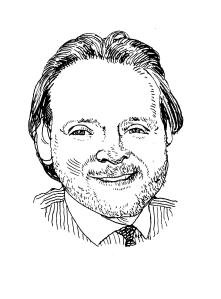The Fuzzy Unemployment Picture and Commercial Real Estate
By Tom Acitelli August 26, 2010 12:39 pm
reprints Without a doubt, the most important economic indicator for the commercial real estate market is employment. No other metric more profoundly impacts the fundamentals of our market than the number of people who are productively working. Unfortunately, news on the jobs front, thus far in 2010, has been lackluster and well below most economists’ forecasts. This is the main reason why momentum has been lost in what little traction the economic recovery had displayed.
Without a doubt, the most important economic indicator for the commercial real estate market is employment. No other metric more profoundly impacts the fundamentals of our market than the number of people who are productively working. Unfortunately, news on the jobs front, thus far in 2010, has been lackluster and well below most economists’ forecasts. This is the main reason why momentum has been lost in what little traction the economic recovery had displayed.
The reason that the real estate industry relies so heavily on job creation is that if people have lost a job, or fear they may lose a job, they do not move out of Mom and Dad’s house; they do not move from a one-bedroom apartment to a two-bedroom; they do not move from a rental unit into a purchased single-family home, a condo or a co-op; and companies that are downsizing do not need more office space, they need less.
For these reasons, participants in the real estate market should be watching this metric with a careful eye.
At the beginning of August, the Department of Labor came out with July jobs numbers indicating that the U.S. economy lost 131,000 jobs. The administration’s interpretation of this dismal report led them to highlight two things that appear relatively positive on the employment front. The first was that the unemployment rate did not increase as it stayed at 9.5 percent. The second was that July was the seventh consecutive month of private-sector job growth. Neither of these arguments truly creates any reason for optimism. As we will see, the official rate of unemployment is of little value in understanding the employment picture, and while we have seen private-sector job growth, it has been far lower than is typical at this point in a recovery.
Let me explain each of these in more detail.
WITH RESPECT TO the official 9.5 percent unemployment rate, by now most of you are probably aware that this official rate is nearly irrelevant. During the Clinton administration, the calculation of our official unemployment rate was changed such that it does not include discouraged workers who have stopped looking for a job for more than 30 days. It also does not include workers currently in part-time positions who would rather be working full time. To the extent that these unemployed and underemployed people are counted, the true unemployment rate is somewhere between 16 and 17 percent.
So, you may intuitively ask, how can the unemployment rate remain unchanged with the economy losing 131,000 jobs? It is because scores of people who dropped out of the workforce are no longer looking for work and, therefore, are no longer considered unemployed. Forget about the official rate–look at net jobs created.
With regard to private-sector job growth, a closer examination is necessary. According to the Department of Labor, in July the private sector created 71,000 new positions, including a gain of 36,000 jobs in the manufacturing sector. This number, unfortunately, is somewhat misleading, as a majority of those manufacturing jobs were in the auto industry, which is receiving a significant amount of support from the federal government.
Not surprisingly, these figures are often revised, and when they are, they are often revised downward. When the July jobs report was released, the Labor Department also stated that the June numbers were far weaker than previously reported. Original estimates were that 125,000 jobs were lost. This figure was revised to 221,000. Private-sector activity in June was originally reported as 83,000 new jobs created when, in actuality, only 31,000 were created.
One of the problems that I have with the figures coming out of the Labor Department is the method they use to estimate job creation. The department uses a computer program that estimates new company formation during each month, including guesses as to the number of companies created and the number of jobs that these hypothetical companies are creating. The justification for this is that these new small companies may not be reachable by the department during its surveying process. So it simply makes the assumption that these firms are out there.
Thus far in 2010, approximately 600,000 jobs are assumed to have been created but yet no one can prove that they actually have been; and only with subsequent revisions, based upon real data, will we know whether they have been created or not. For instance, the Labor Department estimated that private-sector job growth in 2009 was very positive; however, by February of 2010, it admitted that it overestimated the number of jobs created by 1.4 million. This is not an insignificant revision.
During the last recession, the U.S. economy lost about 8.5 million jobs. Based upon population growth, approximately 1.8 million Americans enter the workforce each year; 600,000 drop out. This means that our economy needs to see 100,000 jobs created per month before we start regaining any of the 8.5 million jobs that were lost.
On a national basis, we have not come close to seeing job creation at the rate necessary for real estate fundamentals to improve. This is remarkable given the massive and unprecedented amount of stimulus injected into the economy by the government. The U.S. federal balance sheet has ballooned based upon spending that has produced very little in the way of tangible results given the magnitude of support. It is remarkable to see how weak the recovery has been after this unprecedented fiscal and monetary stimulus.
Last week, more bad news for the job market was unveiled as first-time jobless benefits claims rose by 12,000, to 500,000, representing the highest total since November of last year. This presents a clear warning that official job-creation numbers are probably overestimated. The level of these claims had fallen steadily for many months, indicating that the job market may have been tangibly improving. Last week’s claims number indicates that the recovery may not be coming too quickly.
Add to this disappointing jobs data an increased likelihood of a double dip in the national housing market, and cause for concern increases. Consumer confidence has reverted back to prior lows, leading to a savings rate in excess of 6 percent. This 10 percent swing (the savings rate was -4 percent three years ago) causes about $1 trillion of gross domestic product to evaporate. G.D.P. estimates, which have been revised downward for past periods, are being revised by most economists down to 2.5 percent, or less, for the balance of 2010 and 2011. These growth levels are far below the 6 to 8 percent levels normally seen when our economy emerges from a recession.


